What’s New
- New Solver branding
- Microsoft login (Azure Active Directory)
- Multi-Factor Authentication
- New Budgeting user license
- Users are notified when they are added to a tenant
- Playlists in Archive are now sorted by date
- Static mode for reports (remove or keep formulas)
- Local date format in Designer
- Assignments: Download budget from assignment
- New notification option when Publisher job fails
New Solver branding
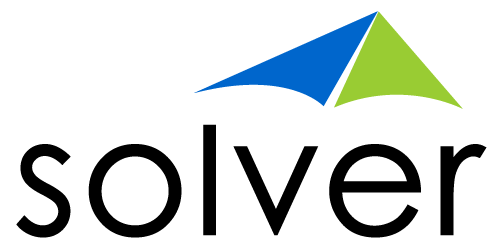
The BI360 portal is now officially the Solver. We have decided to merge the Solver Global name with our BI360 product. Going forward, we will refer to our Cloud service and Private Host Corporate Performance Management application as Solver. More information can be found here: https://www.solverglobal.com/press-releases/solver-announces-product-rebranding-changes-product-name/
The Solver portal will reflect our Solver logo. However, over the coming months, we will continue to transition the BI360 references to Solver.
Sign in with Microsoft (Azure Active Directory)
We have now enabled a Microsoft sign-in option for users when signing in to the Solver portal.
Users can now choose to use their Solver password, or click Sign in with Microsoft to use their Microsoft password.
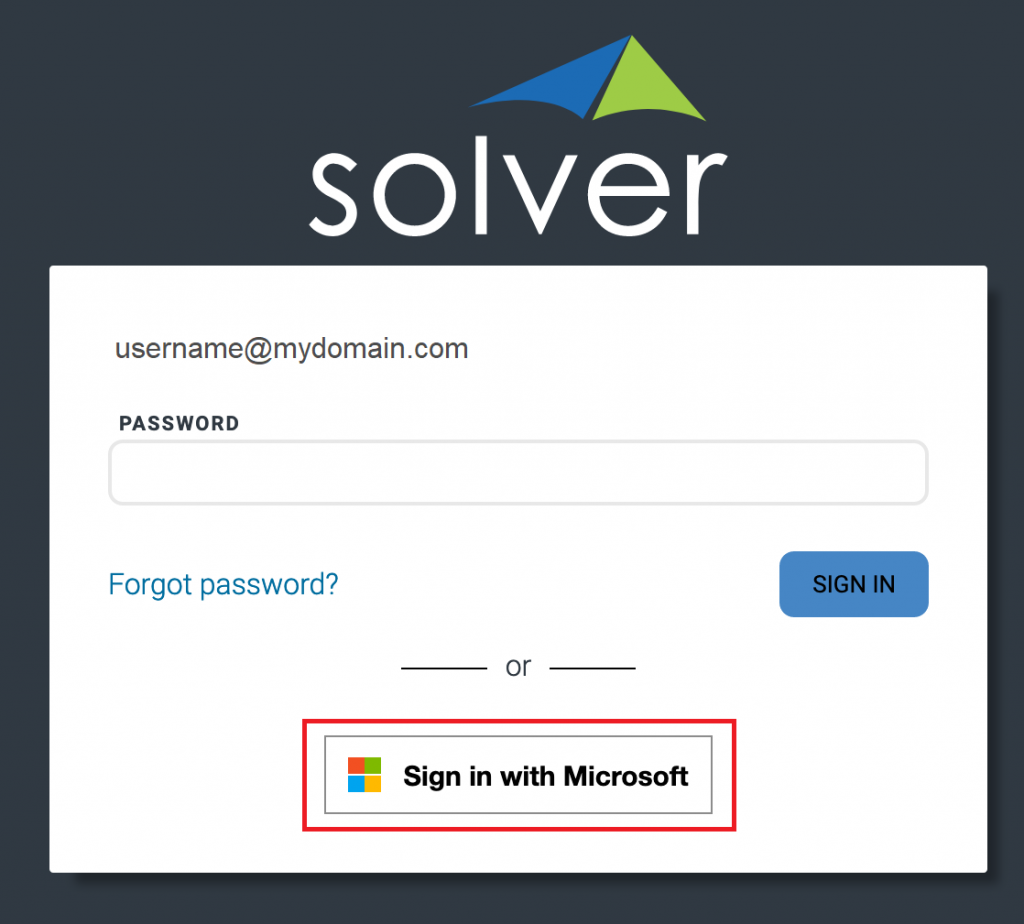
NOTE: The first time you use Sign in with Microsoft, you must approve this as a sign-in method.
Administrators can also require all users to use Microsoft to sign in. See Require Azure Active Directory (AAD) sign-in for all users below.
Require Azure Active Directory (AAD) sign-in for all users
- In the portal, click Settings then Administration.
- On the Overview tab, under SECURITY > AZURE ACTIVE DIRECTORY, enter the domain(s) to require Microsoft sign-in for all users. NOTE: The domain(s) you enter here, must be an Azure Active Directory domain(s).
- Click + Add.
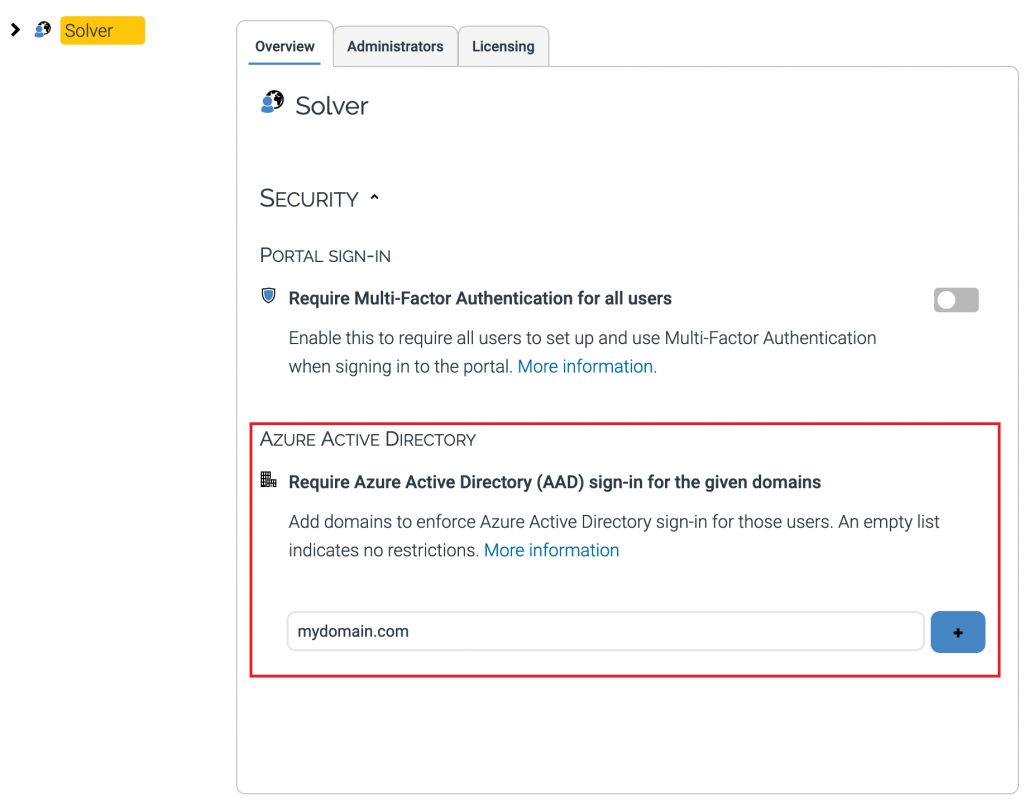
Now all users are required to use their Microsoft account password to sign in to Solver and can no longer use their Solver password.
NOTE: If users have access to multiple tenants where one requires Microsoft sign-in and another does not, then they are required to sign in again when switching to the tenant that requires Microsoft sign-in.
User signs in with Microsoft account when domain requires Microsoft sign-in
When an administrator has entered a domain under Require Azure Active Directory (AAD) sign-in for the given domains, users will get a Sign in menu where they are asked to select a Microsoft account.

Multi-Factor Authentication in Solver
To enhance user security in Solver, we have made it possible to use Multi-Factor Authentication (MFA) when signing in to the portal.
MFA is an enhanced security system that verifies a user’s identity by requiring two or more forms of authentication. Rather than just asking for a username and password, MFA requires additional credentials, such as a code from the user’s smartphone.
MFA is an effective way to provide increased security. Usernames and passwords can be stolen, and they have become increasingly susceptible to brute force attacks. MFA creates multiple layers of security to help increase the confidence that the user requesting access is actually who they claim to be.
With MFA, even if an attacker manages to learn the user’s username and password, it is useless without also having possession of the additional authentication method. In Solver, MFA works by requiring two authentication methods:
- Something you know (username and password)
- Something you have (an authenticator app on your mobile device)

What is an authenticator app and how does it work?
An authenticator app is usually installed on a smartphone and you scan a barcode or enter a key to create an account. After the account is created, the authenticator app generates a 6-8 digit passcode every 30 seconds. The passcode can, for example, be used for login as an extra authentication method in addition to a username and password.
The passcodes are generated from a secret code that is shared between the service you are using, such as Solver, and your device, as well as the current time.
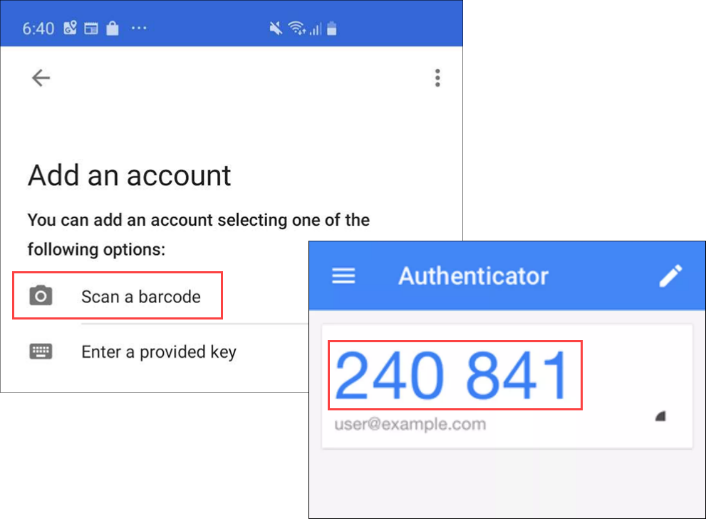
Where can I get an authenticator app and which one should I use?
There are a variety of authenticator apps you can download to your phone from Google Play and the IOS App Store, but we recommend that you use Google Authenticator or Microsoft Authenticator, as those are the ones we have fully tested our MFA solution on.

For more information about installing and setting up an Authenticator app, see Install and set up an Authenticator app
How can I get MFA in Solver?
In Solver, users can set up MFA from their user settings. In addition, administrators can enforce an MFA policy for all end users. See the user procedures below for more information:
- User enables and sets up Multi-Factor Authentication
- Administrator at top level enables Multi-Factor Authentication policy for all users
(Option 1) User enables and sets up Multi-Factor Authentication
- Take one of these actions:
- Click Settings > User settings.
- On the Home screen, in the upper right-hand corner, click User options > Profile.
- On the My profile tab, under Security, turn on the Enable Multi-Factor Authentication switch.
- Install an authenticator app on your mobile device.
NOTE: You can, for example, use Microsoft Authenticator or Google Authenticator from Google Play or App Store. - Scan the image on the screen into your authenticator app.
NOTE: If you cannot scan the image, you can enter the code you see under If you are unable to scan…. - In the Code field, enter the code from your authenticator app.
- Click Verify.
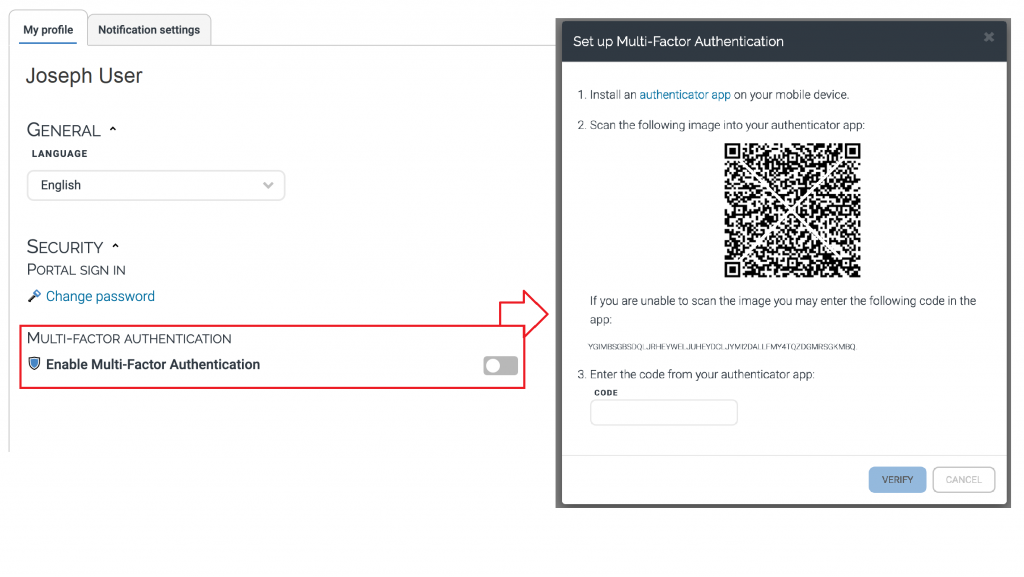
You have now set up MFA for your Solver user profile. The next time you log in to Solver portal, you must enter your username and password, and then enter a verification code from your authenticator app.
User logs into Solver with Multi-Factor Authentication
- In the Username/Email field, enter your email or username.
- In the Password field, enter your password.
- In the Verification code dialog, enter the code from your authenticator app.
- Click Verify.
If you do not have a verification code, click the Do not have a code? link to read more about the MFA setup.
(Option 2) Administrator at top level enables Multi-Factor Authentication (MFA) policy for all users
- Click Settings > Administration.
- On the Overview tab, under Security, turn on the Require Multi-Factor Authentication for all users switch.
NOTE: You can click the More information link to read more about Multi-Factor Authentication (MFA).
Multi-Factor Authentication (MFA) policy is now enabled for this organization. All users must use MFA to sign into the underlying tenants and groups.
User sets up MFA
If your administrator has enabled a Multi-Factor Authentication (MFA) policy for your organization, you will receive a message:
Your organization’s security policy requires you to set up Multi-Factor Authentication (MFA) for your account.
- Click Next.
- Install an authenticator app on your mobile device.
NOTE: You can, for example, use Microsoft Authenticator or Google Authenticator. - Scan the image on the screen into your authenticator app.
NOTE: If you cannot scan the image, you can enter the code you see under If you are unable to scan…. - In the Code field, enter the code from your authenticator app.
- Click Verify.
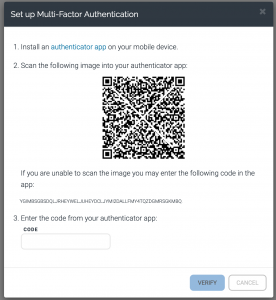
You have now set up MFA for your Solver user profile. The next time you log in to Solver portal, you must enter your username and password, and then enter a verification code from your authentication app.
User logs in to Solver with Multi-Factor Authentication
- In the Username/Email field, enter your email or username.
- In the Password field, enter your password.
- In the Verification code dialog, enter the code from your authenticator app.
- Click Verify.
If you do not have a verification code, click the Do not have a code? link to read more about the MFA setup.
Administration: Budgeting user license
This feature is under review and is not currently available to use
We are now introducing a new Budgeting license. Users with this license will have the possibility to budget directly in the Budgeting module. In the past, users were required to have a license for Report Designer to have access to the Budgeting module, but this is no longer necessary.
In addition to budget directly in the portal, they can download budget templates from the Marketplace, and then download the budgets locally if they want. Furthermore, they can assign budget templates to other users and roles. NOTE: This license does not allow users to upload or create budget templates.
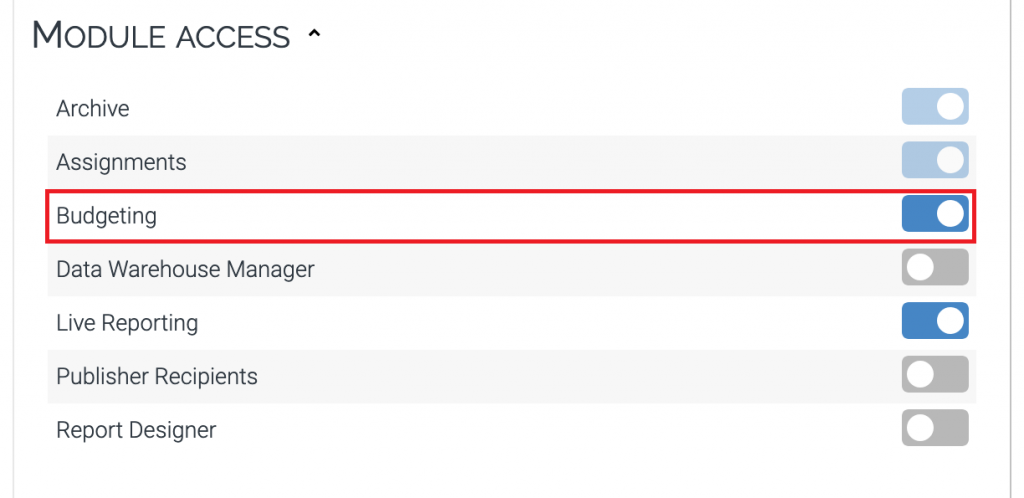
Users with the Budgeting license will also get access to the Assignments and Workflow modules.
Administration: Users are notified when they are added to a tenant
When existing users are added to a tenant, they are notified with information about the user that added them to the tenant.
Archive: Playlists now sorted by date
Playlists in Archive are now sorted by date. In the past, users would see their unread playlists at the top of the list. We have changed this because most of our users are primarily interested in their most recent reports.
Static mode for reports: Remove or keep formulas in run report
Some of our users have very large reports, containing numerous cells with formulas, many that are referring to other cells and functions. This might cause performance issues when running reports in the portal. Therefore, we have made it possible to run reports in “static mode”. This means that all formulas are removed in the workbook and the values are replaced with actual cell values.
Users can control the formula settings for a report template from the Report Properties in Report Designer. On the Reporting tab, there is now a Keep formulas in run report checkbox. If this checkbox is deselected, the formulas are removed from the report.
- The default setting for existing reports is selected (True).
- The default setting for new reports is deselected (False).
NOTE: This option will not have any impact on budgets.
Keep formulas in run reports
- In Report Designer, on the Solver tab, click Report Properties.
- Click the Reporting tab.
- Select the Keep formulas in run report checkbox.
- Click OK.
All formulas in the generated report are kept during processing.
Remove formulas in run reports
- In Report Designer, on the Solver tab, click Report Properties.
- Click the Reporting tab.
- Clear the Keep formulas in run report checkbox.
- Click OK.
All formulas in the generated report are now removed during processing, and the values are replaced with actual cell values. When formulas are removed from a report, it is no longer possible to make calculations in run reports in Live Reporting.
When formulas are removed from the report template, the drilldown will function as normal.
NOTE: For reports that contain advanced formulas, such as IF and INDIRECT in the same formula or when referring to other sheets, it is safest to select the Keep formulas in run report checkbox to ensure the formulas work as intended in the portal.

Local date format
In the past, there have been issues when using, for example, the Norwegian standard date format; day, textual month, and year. The issue has now been solved and the following setting can be used:
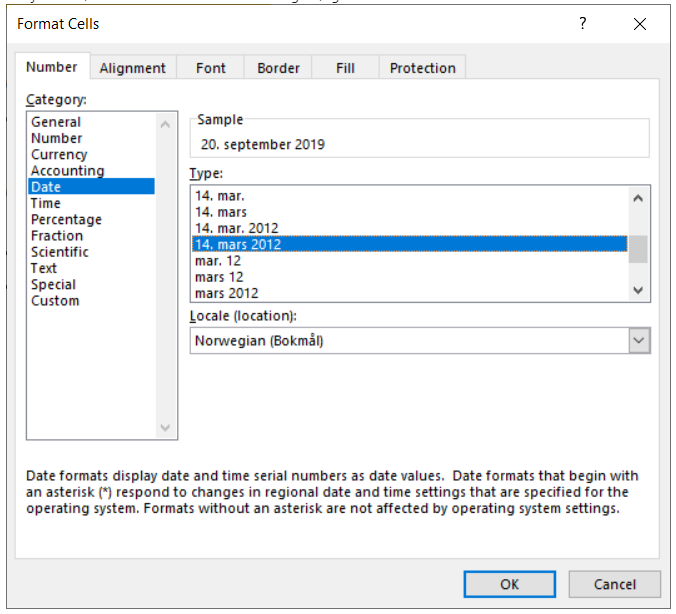
Assignments: Download budget from assignment
It is now possible to download a budget as an Excel file from an assignment in Assignments. The Download functionality is available both for single assignments from Budgeting and assignments in a workflow.
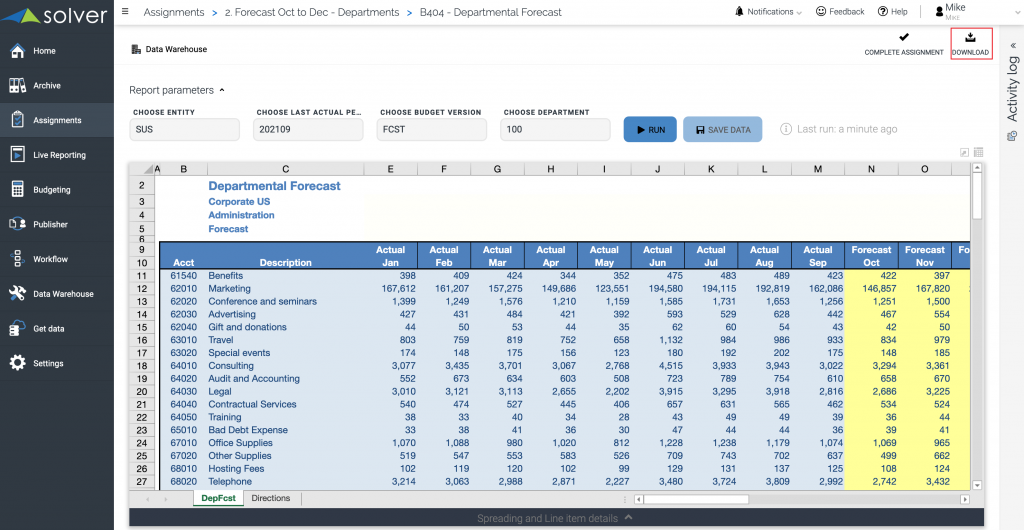
Publisher Notification
There is a new option to receive a notification if a publisher job fails.
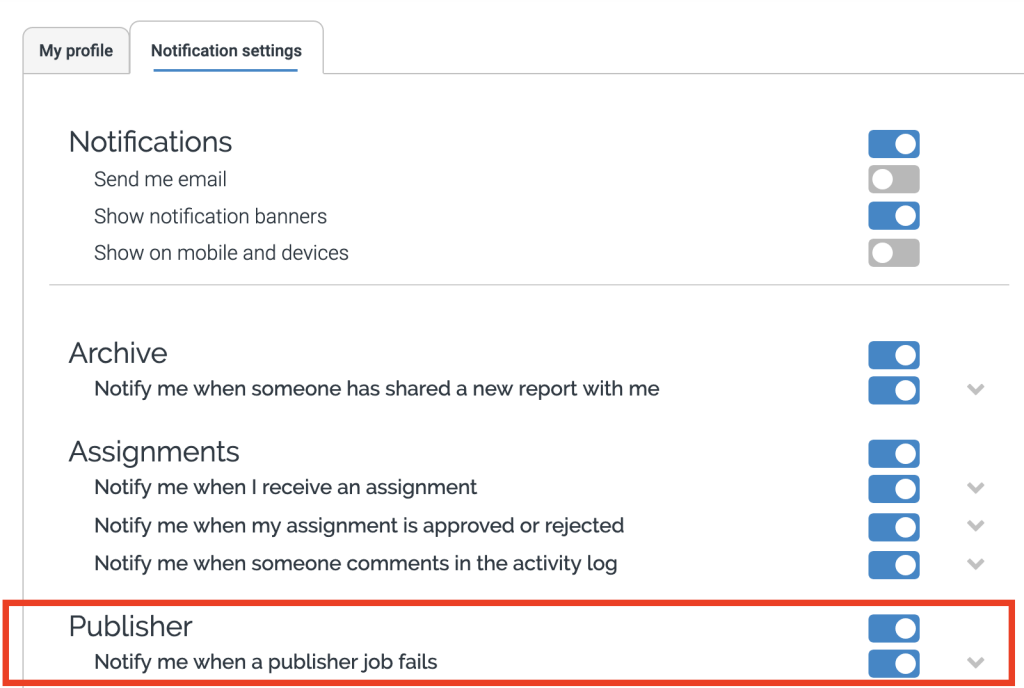
Fixes
- Budgeting: Line Item Details – Expand columns
- Use user’s language when exporting report as PDF
Budgeting: Line Item Details – Expand columns
Users can now expand columns in Line Item Details if they have large numbers that show a number sign, #, due to lack of space in the column.

Live Reporting: Use user’s language when exporting report as PDF
In the past, some users have experienced that the language of their report changes to English when they export a report to pdf. This is now fixed, and reports will now have the same language as the user has set as their language.
Assignments
We have fixed an issue where some users have experienced getting error messages when selecting parameters for their assignments (when the Let User Decide option is selected for parameters in Workflow).